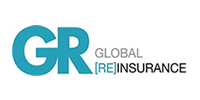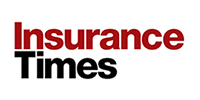Property insurance is proving profitable for both commercial and personal lines insurers, with near record lows in natural disasters influencing claims costs
This article is from the Top 50 Insurers 2025 supplement – click here to read the full report.
Commercial lines specialists are outperforming their personal lines peers in both motor and property insurance, according to the latest analysis of Solvency and Financial Condition Reports (SFCRs) by market intelligence firm Insurance DataLab.

In June 2024, the Prudential Regulation Authority’s reformed Solvency UK rules – referring to the revised UK prudential regime for insurers following Brexit and Britain’s break from the European Union – came into force.
The revamped disclosures offer a more detailed breakdown of insurers’ figures than ever before, separating personal and commercial business within the motor and property markets, as well as providing a clearer picture of where profitability is being achieved.
Similarly to previous years, the UK general insurance (UKGI) motor market remains unprofitable, with both personal and commercial lines insurers posting aggregate combined operating ratios (CORs) above 100% for 2024/25.
Personal motor insurers reported a COR of 106%, compared with 105.6% for their commercial peers. This places both segments in loss-making territory, with very little difference in overall performance.
Unsurprisingly, personal motor continues to dwarf commercial motor in scale, earning £12.2bn in net earned premium over the most recent reporting period, compared with £2.9bn for this line’s commercial counterpart.
With this large premium base comes a number of efficiencies of scale, with personal lines motor insurers reporting an expense ratio of just 26.4% – one of the best across the whole of UKGI and some 5.7 percentage points ahead of the 32.1% reported by commercial motor insurers.
Commercial motor’s relative strength, meanwhile, lies in its loss ratio. At 73.4%, this is 6.3 percentage points better than the personal motor market, which reported an aggregate loss ratio of 79.7% for 2024/25.
This outperformance compared to personal lines can be partially attributed to the risk management efforts of commercial lines insurers – particularly in the fleet market, where advanced driver assistance systems (adas) technology and telematics devices are becoming increasingly commonplace.
Personal motor, by contrast, is more exposed to the frequency of smaller claims, rising repair and labour costs and regulatory pressures on pricing, all of which contribute to its higher loss ratio. Commercial fleets can also suffer occasional large claims, but their structured risk management helps to offset volatility.
The historical context of performance in this business line helps to underline the challenge facing motor insurers, regardless of whether they are focused on commercial or personal lines.
In the immediate aftermath of 2020’s Covid-19 pandemic, loss ratios fell sharply across the motor insurance market as a result of reduced driving miles caused by mandated lockdown restrictions. But, after two profitable underwriting years, the aggregate market fell back into loss-making territory with a COR of 111.2% for 2022/23.
The market COR peaked at 113.4% the following year, before improving to an aggregate position across commercial and personal lines of 105.9% for 2024/25 – the best performance for the market since 2021/22, no doubt aided by the significant premium increases that have been pushed through in recent years.
But, with premium growth fading out across 2025, further pressure will be applied to motor insurers’ bottom lines at the turn of the year – especially with claims inflation still presenting a significant challenge for the market.
Profitable property market
In contrast to motor, property insurers have delivered strong results – however, the divide between personal and commercial lines is much more striking.
Commercial property insurers reported an aggregate COR of 82.4% for 2024/25, underpinned by a loss ratio of just 49.3% and an expense ratio of 33.1%.
This result marks these insurers as the best performing cohort in this analysis. Their ability to combine favourable claims experience with relatively tight cost control gives them a clear advantage.
Personal property insurers, meanwhile, reported a COR of 96.2% for 2024/25 – still below 100% and therefore profitable, but well adrift of their commercial peers. Their loss ratio of 60.9% and expense ratio of 35.3% highlight the twin pressures facing the segment.
It is worth noting, however, that the commercial property market is incredibly volatile, with particularly long tails for large catastrophe claims that have varying levels of frequency and severity.
Indeed, figures from the Emergency Events Database (EM-DAT) of natural disasters – which is maintained by Belgium’s Centre for Research on the Epidemiology of Disasters – suggest that 2024 was a quieter than average year for natural disasters, with 409 recorded events compared to an average of 430.8 since 2020.
This relative quiet helped support profitability in the property insurance market, though the long tail nature of catastrophe losses means volatility remains a risk.
Looking at the wider property insurance market, the turnaround in profitability has been striking.
After running at a heavy loss in 2020/21 with an aggregate COR across commercial and personal lines of 110.4%, the overall property book has markedly improved, swinging back into profit in 2024/25 with a highly profitable COR of 88.5%.
Read: Motor and home premiums fall again in August 2025
Explore more personal lines related content here, or discover more news here
Compare and contrast
The introduction of Solvency UK’s more detailed disclosures has transformed the ability to compare underwriting performance. By breaking out personal and commercial lines within motor and property, the new data collated by Insurance DataLab shows clearly where insurers are succeeding and where they are still struggling.
These disclosures have helped sharpen the market’s focus on profitability and highlighted the divergent fortunes of personal and commercial lines. Motor remains a drag on overall performance, though there are signs of gradual recovery from the worst years.
Property, by contrast, has emerged as a relative bright spot – particularly in commercial lines, where insurers are delivering results that set them apart from the rest of the market.
The real test will be whether these margins can withstand future claims volatility and a less favourable rating environment.

Hosted by comedian and actor Tom Allen, 34 Gold, 23 Silver and 22 Bronze awards were handed out across an amazing 34 categories recognising brilliance and innovation right across the breadth of UK general insurance.























































No comments yet